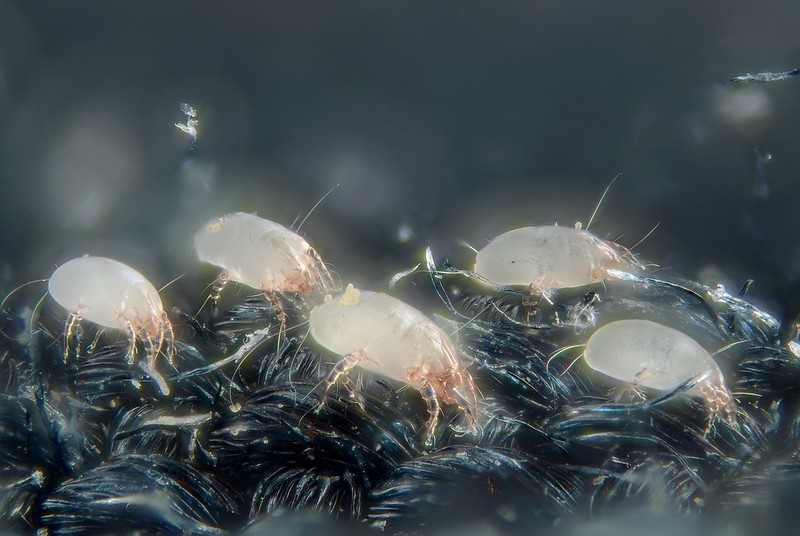 Photo by: Gilles San Martin
Photo by: Gilles San Martin
Dust mites are tiny creatures that are found in most homes. In fact, 84% of homes in the US have detectable dust mite allergens[1]. They are 0.2mm-0.3mm long(or around 1/100 of an inch). This makes them just a little too small to be seen by our eyes. They are so small and so numerous in some households that a single gram of dust could contain a few hundred mites.
[1] Source: 84% of American homes have dust mite allergensThe main food source of dust mites is human skin flakes. We humans naturally shed our skin every day, and it makes up between 20-50% of house dust. Estimates of how much skin a person sheds vary widely, but over the course of a year it could be something like a pound. The skin flakes float around indoors and settle on surfaces. Porous surfaces like fabrics can retain a large amount of these flakes that becomes lodged or stuck within them. They also rub off into our bed when we sleep or into clothes, towels, and furniture during the day.
Even with regular cleaning, our skin accumulates at high concentrations in our mattresses and bedding, curtains, rugs, fabric covered chairs and sofas, and other objects like clothing, boxes and books. This is the food supply for dust mites, and as they eat, they leave behind fecal pods, which contain several different allergens. This is undetectable by our vision and smell, since the pods are too small to see and odorless. But what has happened is that our home and the items in the home that were full of harmless skin flakes in the form of house dust have become full of allergens. These allergens have a half-life upwards of 10 years, so they just sit in your house until you remove them.
After dust mites create their fecal pods, they float into the air in our homes until we breathe them in. Once they land in our lungs, they split open and spill out their payload of dozens of types of different allergens, the primary one is called Der p 1(it's named after Dermatophagoides pteronyssinus, the scientific name of the European dust mite). These allergens then wreck havoc on our immune system and cause tissue damage in the lungs, skin, sinuses, and likely the gut.
Dust mite allergens are strongly associated with asthma, eczema, and allergic rhinitis. For example this study followed children for 11 years after birth and found that children with a dust mite allergy were 19.7 times more likely to have asthma. This study showed that inhaling dust mite allergens directly led to new eczema symptoms in 45% of participants in the following hours. Although it's not as well studied as the big three alergic diseases, there is also some research associating IBS with dust mite allergy. This study found patients with HDM specific IgE(a marker of immune response) were 3.64 times more likely to have bloating.